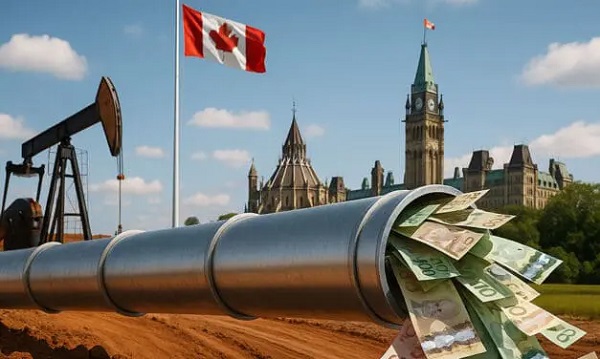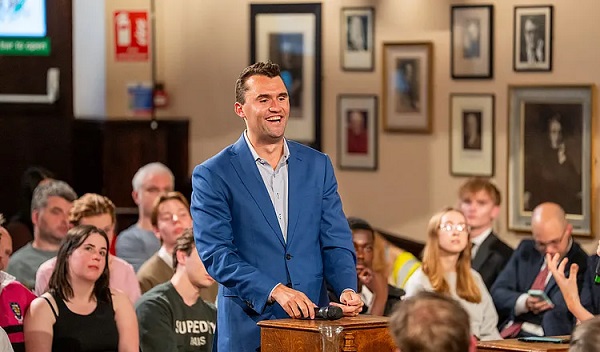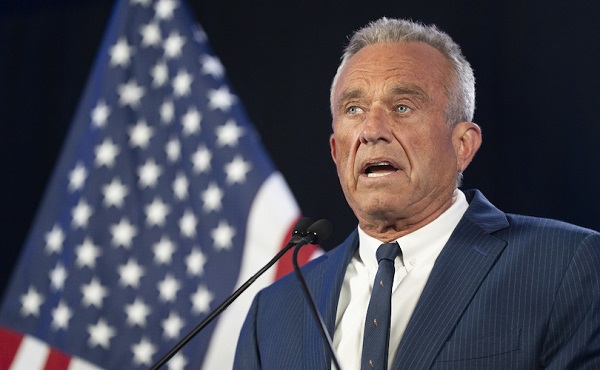National
From Trudeau to Carney, Canada’s Big Projects Plan Risks Same Cycle of Self-Dealing, Squandering, and Foreign Influence

Editor’s Note
The writer is a former partner of a national accounting firm and a registered Liberal who has served seven leaders of the Liberal Party, including four prime ministers. He has subject expertise in real estate development in both the public and private sectors.
VANCOUVER — Prime Minister Mark Carney has announced the launch of a Major Projects Office dedicated to accelerating nation-building initiatives. Most would agree Canada can and must unlock its vast potential to secure prosperity and safety. But if the serious vulnerabilities outlined here remain unaddressed as Ottawa prepares to push forward with this transformative plan, hidden outcomes that undercut transparency and security could undermine the very purpose of Carney’s effort—to rebuild a stronger nation.
The key unresolved matters involve vulnerabilities to foreign interference and the impacts of global money, along with a lack of protections for whistleblowers, while gaps in ethics and transparency persist.
Prime Minister Mark Carney’s Alleged Conflicts of Interest
Democracy Watch, in a July 14, 2025, release, called on Prime Minister Carney to sell his investments, including stock options in more than 550 companies, to eliminate what it described as significant financial conflicts of interest. The group has denounced Carney’s so-called blind trust and ethics screen as riddled with loopholes that allow him to influence decisions from which he could personally profit. It is urging reforms to federal law—closing loopholes in ethics and lobbying codes, lowering donation limits, and strengthening oversight of government watchdogs.
Similar concerns extend into the Prime Minister’s inner circle. On September 5, 2025, the Globe and Mail‘s reporting raised unresolved concerns about Tom Pitfield, the Prime Minister’s principal secretary, focusing on his ties to both the Trudeau and Carney governments and Big Tobacco. Pitfield’s significant stake in Data Sciences and his spouse Anna Gainey’s government role are cited as possible conflicts, especially as critics say his links to tobacco interests undermine federal efforts against tobacco use and youth vaping.
Significantly, foreign interference flagged by the Hogue Commission has not been confronted, including the urgent need for a foreign agent registry. An inquiry into Chinese interference in Canadian elections reveals that Beijing has orchestrated extensive networks to support preferred candidates and target critics, primarily through funding and directing local community associations via diplomatic channels.
As detailed in my January 2025 op-ed, Inside the Liberal Party’s Data Machine, which outlined the party’s continued links from Trudeau to Pitfield and his spouse Anna Gainey, I urged Ottawa to implement a foreign agent registry like those in the United States and Great Britain, a step made more crucial by the Hogue findings and recent billion-dollar announcements from the Prime Minister including the establishment of the Major Projects Office.
Meanwhile, the Liberal Party’s own website still carries a header image of Justin Trudeau and Mark Carney under the 2021 campaign slogan “Forward. For Everyone.” This image signals continuity, not change.
Additionally, as raised by Mayor Brad West in his August 2025 op-ed for The Bureau, the corrosive impact of offshore cash on major projects remains ignored. British Columbia’s housing market is showing signs of instability reminiscent of past financial bubbles seen in Ireland, Spain, and the U.S., with slowing sales, stalled developments, rising debt, and increasing youth unemployment. The current economic model, heavily reliant on real estate, is unsustainable, and the province must shift towards innovation, productivity, and balanced immigration to avoid severe fallout and ensure long-term prosperity.
Finally, whistleblowers remain unprotected, as Ottawa has also failed to rebuild public trust through transparency and accountability.
On whistleblower protection, the evidence is damning. According to the Centre for Free Expression at Toronto Metropolitan University, Canada’s whistleblower laws are ranked worst in the world, tied with Lebanon. The Public Servants Disclosure Protection Act has cost taxpayers over $100 million in 16 years, yet it has never protected a single whistleblower. As David Hutton wrote in the Globe and Mail on May 19, 2023, other nations are strengthening protections while Canada weakens. As E. von Scheel reported in 2019, experts have called Canada’s framework a “tissue paper shield.”
Transparency International Canada, in its August 19, 2025, submission to the Financial Action Task Force, confirmed the above serious unresolved issues. The submission urged a call to action for more robust laws to prevent money laundering and terrorist financing including more reporting mechanisms to combat financial crime.
As I asserted in my January 2025 op-ed, only full disclosure and decentralization of financial relationships among key Liberal Party stakeholders can rebuild public trust.
In summary, if Canada is to authentically strive for a liberal democracy that delivers economic opportunity, equality, transparency, accountability, and the capacity for self-critique, we should remember the wisdom in Proverbs 11:2-3.
“When pride comes, then comes disgrace, but with humility comes wisdom. The integrity of the upright guides them, but the unfaithful are destroyed by their duplicity.”
The Bureau is a reader-supported publication.
To receive new posts and support my work, consider becoming a free or paid subscriber.
Business
Upcoming federal budget likely to increase—not reduce—policy uncertainty

From the Fraser Institute
By Tegan Hill and Grady Munro
The government is opening the door to cronyism, favouritism and potentially outright corruption
In the midst of budget consultations, the Carney government hopes its upcoming fall budget will provide “certainty” to investors. While Canada desperately needs to attract more investment, the government’s plan thus far may actually make Canada less attractive to investors.
Canada faces serious economic challenges. In recent years, the economy (measured on an inflation-adjusted per-person basis) has grown at its slowest rate since the Great Depression. And living standards have hardly improved over the last decade.
At the heart of this economic stagnation is a collapse in business investment, which is necessary to equip Canadian workers with the tools and technology to produce more and provide higher quality goods and services. Indeed, from 2014 to 2022, inflation-adjusted business investment (excluding residential construction) per worker in Canada declined (on average) by 2.3 per cent annually. For perspective, business investment per worker increased (on average) by 2.8 per cent annually from 2000 to 2014.
While there are many factors that contribute to this decline, uncertainty around government policy and regulation is certainly one. For example, investors surveyed in both the mining and energy sectors consistently highlight policy and regulatory uncertainty as a key factor that deters investment. And investors indicate that uncertainty on regulations is higher in Canadian provinces than in U.S. states, which can lead to future declines in economic growth and employment. Given this, the Carney government is right to try and provide greater certainty for investors.
But the upcoming federal budget will likely do the exact opposite.
According to Liberal MPs involved in the budget consultation process, the budget will expand on themes laid out in the recently-passed Building Canada Act (a.k.a. Bill C-5), while also putting new rules into place that signal where the government wants investment to be focused.
This is the wrong approach. Bill C-5 is intended to help improve regulatory certainty by speeding up the approval process for projects that cabinet deems to be in the “national interest” while also allowing cabinet to override existing laws, regulations and guidelines to facilitate such projects. In other words, the legislation gives cabinet the power to pick winners and losers based on vague criteria and priorities rather than reducing the regulatory burden for all businesses.
Put simply, the government is opening the door to cronyism, favouritism and potentially outright corruption. This won’t improve certainty; it will instead introduce further ambiguity into the system and make Canada even less attractive to investment.
In addition to the regulatory side, the budget will likely deter investment by projecting massive deficits in the coming years and adding considerably to federal debt. In fact, based on the government’s election platform, the government planned to run deficits totalling $224.8 billion over the next four years—and that’s before the government pledged tens of billions more in additional defence spending.
A growing debt burden can deter investment in two ways. First, when governments run deficits they increase demand for borrowing by competing with the private sector for resources. This can raise interest rates for the government and private sector alike, which lowers the amount of private investment into the economy. Second, a rising debt burden raises the risk that governments will need to increase taxes in the future to pay off debt or finance their growing interest payments. The threat of higher taxes, which would reduce returns on investment, can deter businesses from investing in Canada today.
Much is riding on the Carney government’s upcoming budget, which will set the tone for federal policy over the coming years. To attract greater investment and help address Canada’s economic challenges, the government should provide greater certainty for businesses. That means reining in spending, massive deficits and reducing the regulatory burden for all businesses—not more of the same.
Alberta
Equalization program disincentivizes provinces from improving their economies

From the Fraser Institute
By Tegan Hill and Joel Emes
As the Alberta Next Panel continues discussions on how to assert the province’s role in the federation, equalization remains a key issue. Among separatists in the province, a striking 88 per cent support ending equalization despite it being a constitutional requirement. But all Canadians should demand equalization reform. The program conceptually and practically creates real disincentives for economic growth, which is key to improving living standards.
First, a bit of background.
The goal of equalization is to ensure that each province can deliver reasonably comparable public services at reasonably comparable tax rates. To determine which provinces receive equalization payments, the equalization formula applies a hypothetical national average tax rate to different sources of revenue (e.g. personal income and business income) to calculate how much revenue a province could generate. In theory, provinces that would raise less revenue than the national average (on a per-person basis) receive equalization, while province’s that would raise more than the national average do not. Ottawa collects taxes from Canadians across the country then redistributes money to these “have not” provinces through equalization.
This year, Ontario, Quebec, Manitoba and all of Atlantic Canada will receive a share of the $26.2 billion in equalization spending. Alberta, British Columbia and Saskatchewan—calculated to have a higher-than-average ability to raise revenue—will not receive payments.
Of course, equalization has long been a contentious issue for contributing provinces including Alberta. But the program also causes problems for recipient or “have not” provinces that may fall into a welfare trap. Again, according to the principle of equalization, as a province’s economic fortunes improve and its ability to raise revenues increases, its equalization payments should decline or even end.
Consequently, the program may disincentivize provinces from improving their economies. Take, for example, natural resource development. In addition to applying a hypothetical national average tax rate to different sources of provincial revenue, the equalization formula measures actual real-world natural resource revenues. That means that what any provincial government receives in natural resource revenue (e.g. oil and hydro royalties) directly affects whether or not it will receive equalization—and how much it will receive.
According to a 2020 study, if a province receiving equalization chose to increase its natural resource revenues by 10 per cent, up to 97 per cent of that new revenue could be offset by reductions in equalization.
This has real implications. In 2018, for instance, the Quebec government banned shale gas fracking and tightened rules for oil and gas drilling, despite the existence of up to 36 trillion cubic feet of recoverable natural gas in the Saint Lawrence Valley, with an estimated worth of between $68 billion and $186 billion. Then in 2022, the Quebec government banned new oil and gas development. While many factors likely played into this decision, equalization “claw-backs” create a disincentive for resource development in recipient provinces. At the same time, provinces that generally develop their resources—including Alberta—are effectively punished and do not receive equalization.
The current formula also encourages recipient provinces to raise tax rates. Recall, the formula calculates how much money each province could hypothetically generate if they all applied a national average tax structure. Raising personal or business tax rates would raise the national average used in the formula, that “have not” provinces are topped up to, which can lead to a higher equalization payment. At the same time, higher tax rates can cause a decline in a province’s tax base (i.e. the amount of income subject to taxes) as some taxpayers work or invest less within that jurisdiction, or engage in more tax planning to reduce their tax bills. A lower tax base reduces the amount of revenue that provincial governments can raise, which can again lead to higher equalization payments. This incentive problem is economically damaging for provinces as high tax rates reduce incentives for work, savings, investment and entrepreneurship.
It’s conceivable that a province may be no better off with equalization because of the program’s negative economic incentives. Put simply, equalization creates problems for provinces across the country—even recipient provinces—and it’s time Canadians demand reform.
-

 Crime2 days ago
Crime2 days agoCharlie Kirk ASSASSINATED
-

 Alberta2 days ago
Alberta2 days agoProvince urging post secondary students to apply for loans, grants, scholarships, bursaries and awards
-

 Crime2 days ago
Crime2 days agoConservative speaker and celebrity Charlie Kirk shot during Q & A event at Utah Valley University
-

 Energy2 days ago
Energy2 days agoCarney government should undo Trudeau’s damaging energy policies
-

 Alberta24 hours ago
Alberta24 hours agoAlberta deserves a police force that actually reflects its values
-

 Alberta23 hours ago
Alberta23 hours agoOPEC+ chooses market share over stability, and Canada will pay
-

 Crime2 days ago
Crime2 days agoAlleged Killer Of Charlie Kirk Caught
-

 Opinion2 days ago
Opinion2 days agoThe Charlie Kirk I Knew











